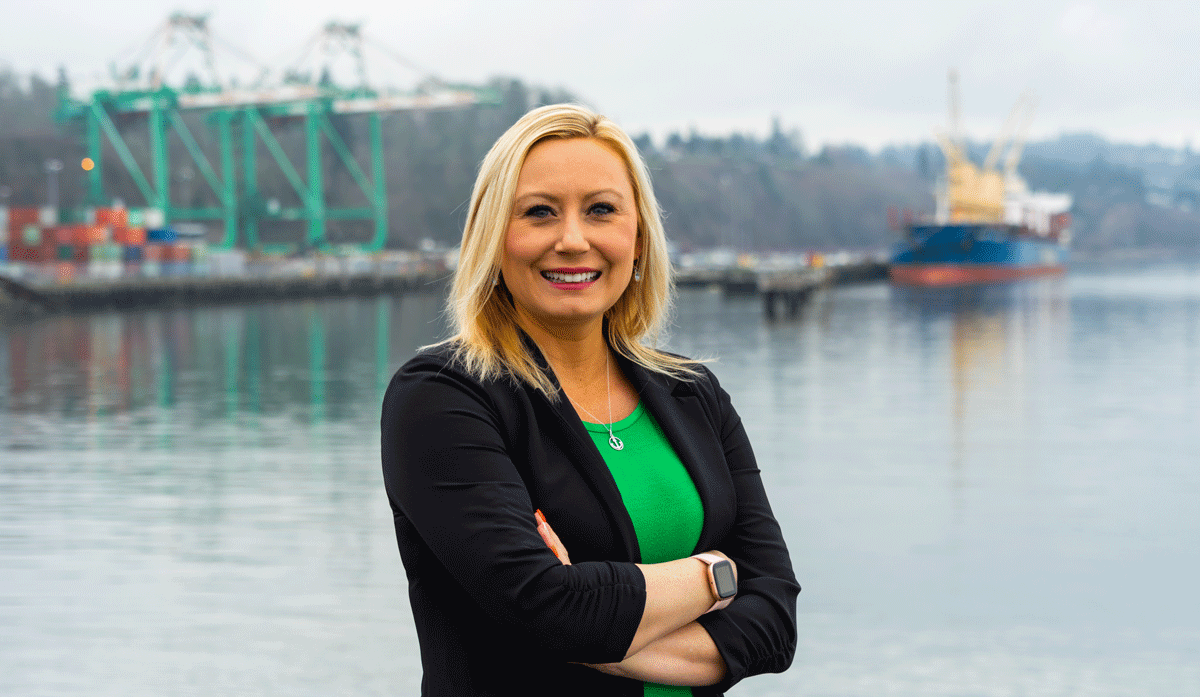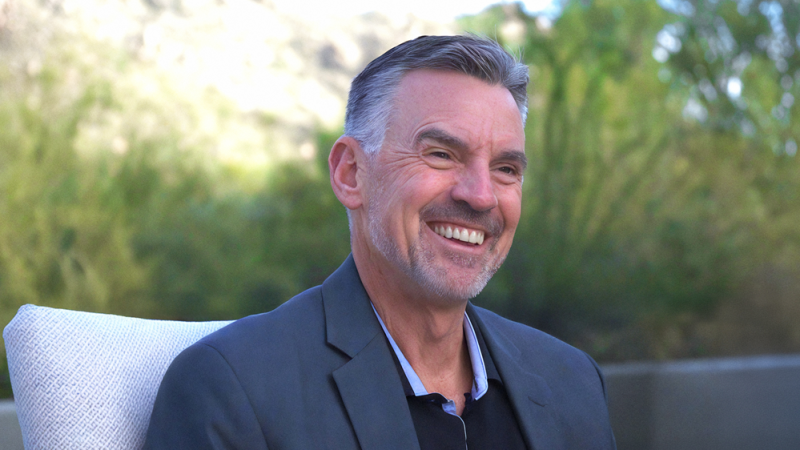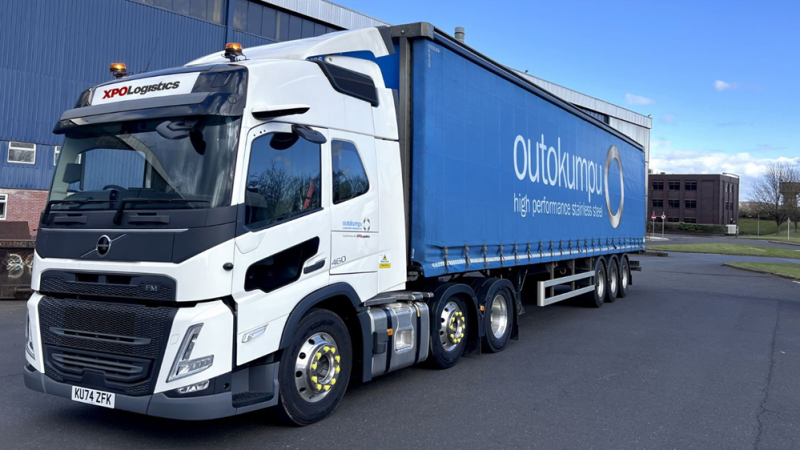When you think of travel infrastructure that is essential to the aerospace industry, your mind probably doesn’t go to ports. But the Port of Everett is essential to getting Boeing planes in the air.
The Port of Everett is the third largest container port in Washington State, handling anywhere between $21 and $30 billion in US exports. The international shipping terminal handles oversized parts for planes, including Boeing 737s, 747s, 777s and even Air Force One.
Boeing is only one of the customers that the port serves, however.
“We are an oversized, high-value facility, designated a strategic port by the Maritime Administration, one of only 18 in the nation,” says Lisa Lefeber, CEO of the Port of Everett. “We have mariner facilities, boat slips for recreational and charter boats, a 13-lane boat launch and a 1,500-acre island beach for recreation.”
Alongside its many services, the Port of Everett has a large real estate portfolio including a billion-dollar mixed-use redevelopment that includes retail, office, and leisure facilities, as well as business parks in the port’s industrial development. Alongside all these properties, the Port of Everett also works to preserve the local environment.
“We operate a mitigation bay that allows for salmon habitat and water birds which entities that need environmental credits can invest in,” Lefeber tells us.
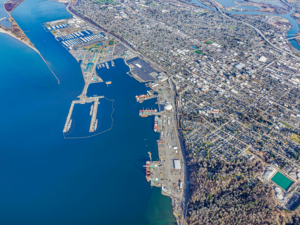 Small but Mighty
Small but Mighty
The Port is capable of handling lots of customers, and big cargo, but it is not actually that big a facility in itself.
“We’re small but mighty,” Lefeber explains. “We have pretty much anything you could need; we can handle anything you want. We have got a skilled workforce. We have a high rate of no damage in our cargo operations, with high-quality customer service and quick gate times.”
The Port of Everett is able to serve these customers because it is primarily a breakbulk cargo facility.
“We don’t have a regular business like the major container ports do,” Lefeber says. “Our value is in our flexible and strategic infrastructure investment. We build our capital improvement plans around supporting the unique size and capability requirements of the aerospace and military industries.”
The flexible infrastructure that the Port of Everett has created can handle cargo of any size that needs to come into or go out of the USA. The port has a heavy haul route with direct access from the seaport to the highway and the western terminal for the BNSF mainline to Chicago.
“Every piece of cargo on that line has to come through Everett anyway, so we are well positioned,” Lefeber points out. “We are providing a very attractive, quick, and efficient alternative. We can move project cargo and oversized containers through to any part of our nation and overseas.”
But as much as Port of Everett can provide, talking to Lefeber it is clear she believes it can do more.
“We are not a county-wide port,” says Lefeber. “A lot of the port zones in Washington State encompass their entire county, and that’s important because it provides extra capacity for infrastructure investments. We are in the fastest growing county in the state, but we only cover 10% of the county, so our capacity for reinvestment is limited.”
Last December the Port of Everett Commission unanimously passed Resolution Number 1220, which decreed the port would submit a proposition to enlarge its district to include most of Snohomish County, excluding the City of Edmonds, Port of Edmonds, Town of Woodway, Point Wells, and Esperance.
If the proposal receives more than 50% of the vote on the public ballot, the new boundaries will go ahead opening up exciting possibilities for the port.
But with those possibilities come responsibilities, and Lefeber takes Port of Everett’s duty to the environment under its care very seriously.
“We have made a lot of electrical infrastructure investments. The Norton Cargo Terminal we opened in 2022 covers 40 acres and is the greenest terminal of its kind on the West Coast. We make use of stormwater, we have infrastructure wired in for electric harbour craft and tugs,” Lefeber says. “Our South Terminal that we opened in 2021 also has all the electrical infrastructure in place for future shore power projects, and we have invested in a fleet of electric forklifts and port vehicles to further reduce our footprint. We have also prioritised preserving the good air quality we enjoy here.”
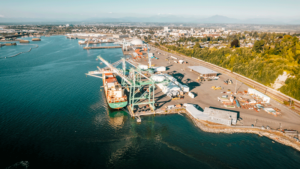 New Horizons
New Horizons
In pursuing these goals, the Port of Everett relies on having a strong team to realise its vision. For Lefeber, building and investing in that team is a key priority for the facility.
“At the executive level we use trusted recruiters to bring us the best skills and talent available,” she says. “In our maintenance and security departments, we work with local workforce development. We advertise where necessary, but word of mouth is very important to us. The port industry is a fun and exciting industry to work in. Our mission is a big attraction for recruitment, alongside the excellent benefits we provide. It is very fulfilling to help people get jobs that make a real difference to the overall economy.”
Lefeber has big plans for just what that difference could look like. Currently, the Port is prepared for a huge clean-up at the seaport, to clear historic contamination. This is one of many cleanups the Port has undertaken. The Port has cleaned up 250 acres of legacy contamination or is now in cleanup action along the waterfront.
“We also have a large mixed-use development that we are building,” Lefeber tells us. “We are breaking ground on two new buildings next month at Waterfront Place for more retail facilities at the waterfront. We are rebuilding our fuel dock alongside other new amenities. At the same we are continuing to work on air quality and environmental mitigation and looking at ways to tie all of that together to make a healthy environment while providing good industrial and trade service, and a better quality of life for people across the county.”
The Port of Everett’s Waterfront Place is a new 1.5 million square foot mixed-use development located on 65 acres at the Everett waterfront. At full build-out, the Waterfront Place mixed-use development will include 63,000 square feet (sf) of retail/restaurant space, another 20,000 sf of marine retail, 447,500 sf of office, two waterfront hotels, and up to 660 waterfront housing units. Featured amenities include new trails and regional parks, public gathering spaces, a variety of fine and casual dining, local shops, and marine sales and services.
